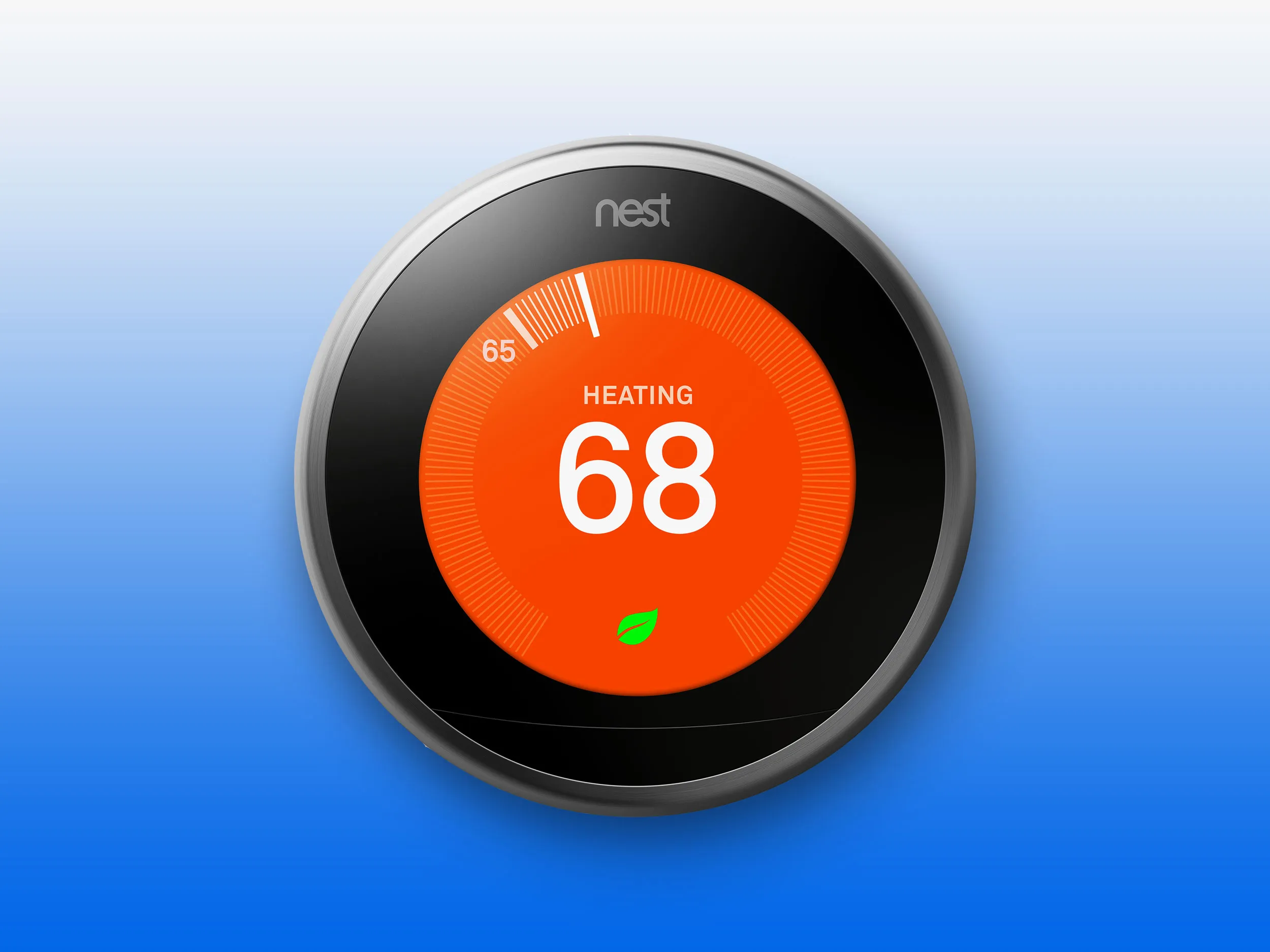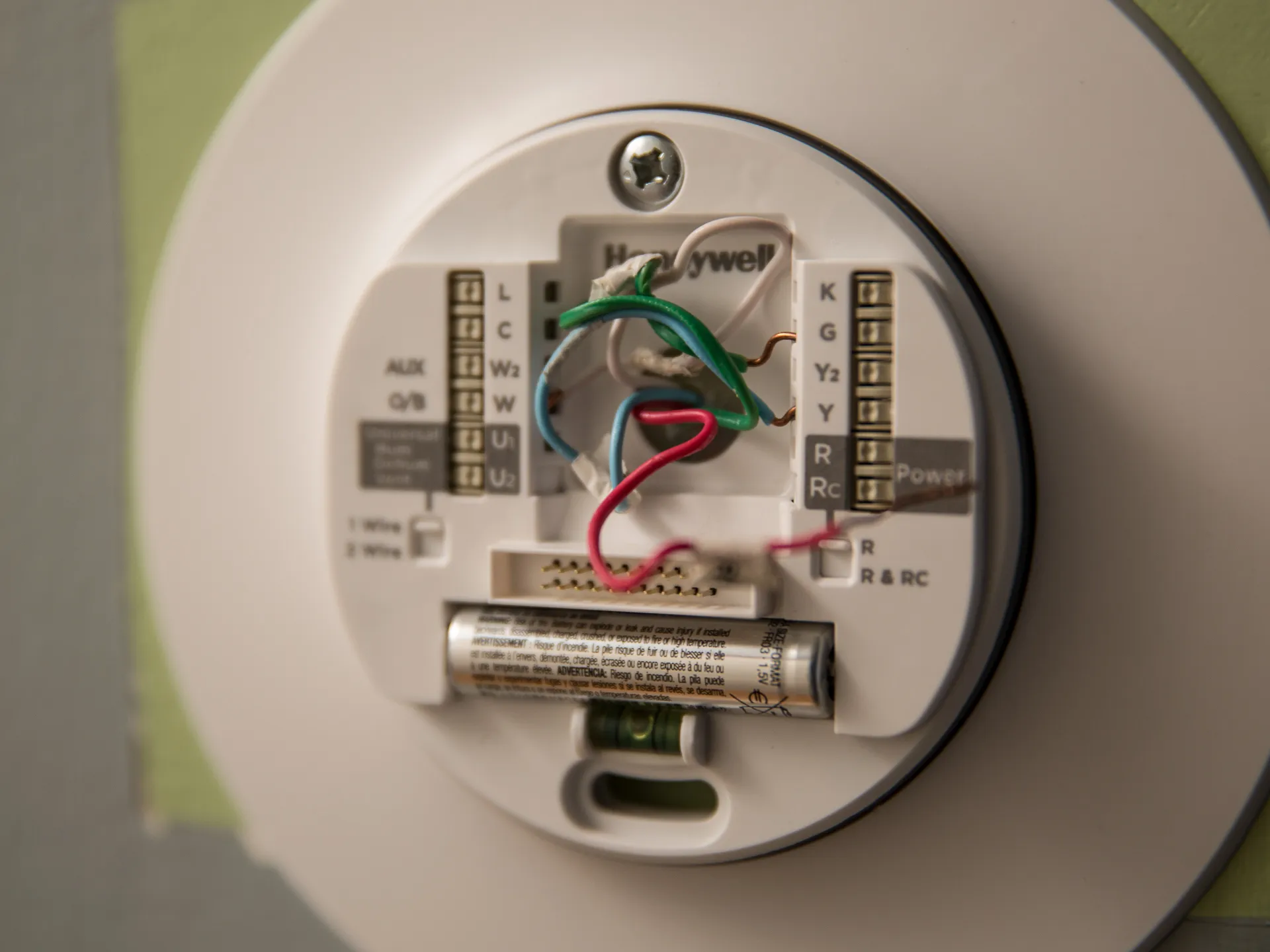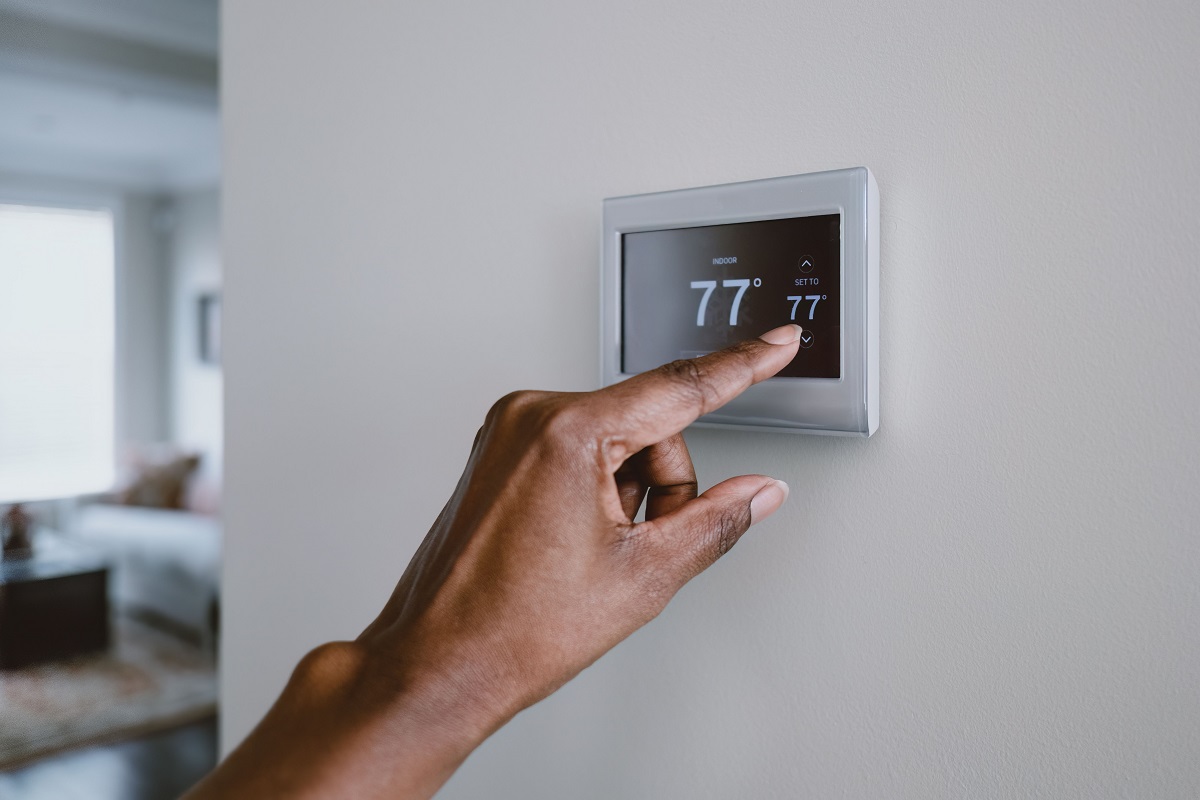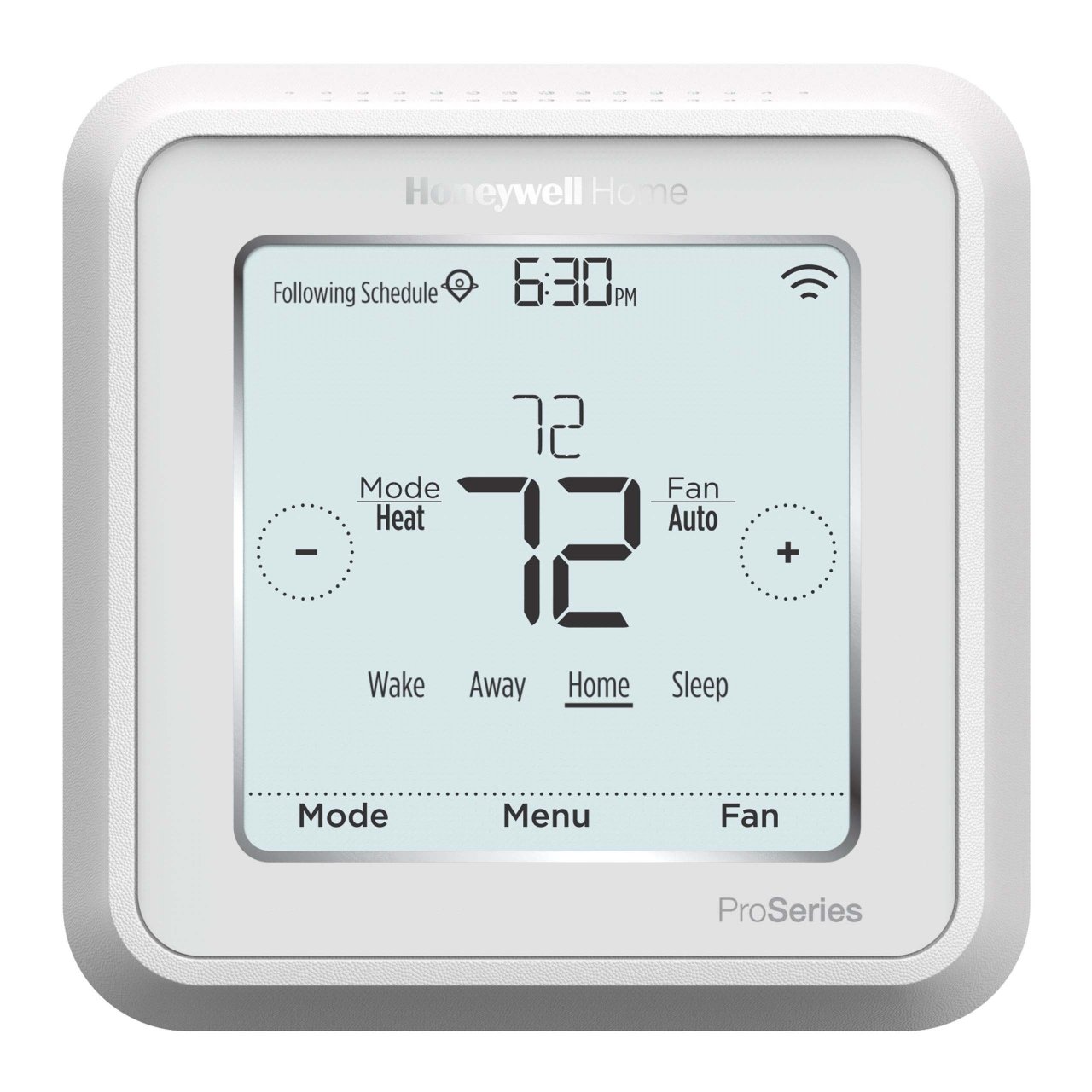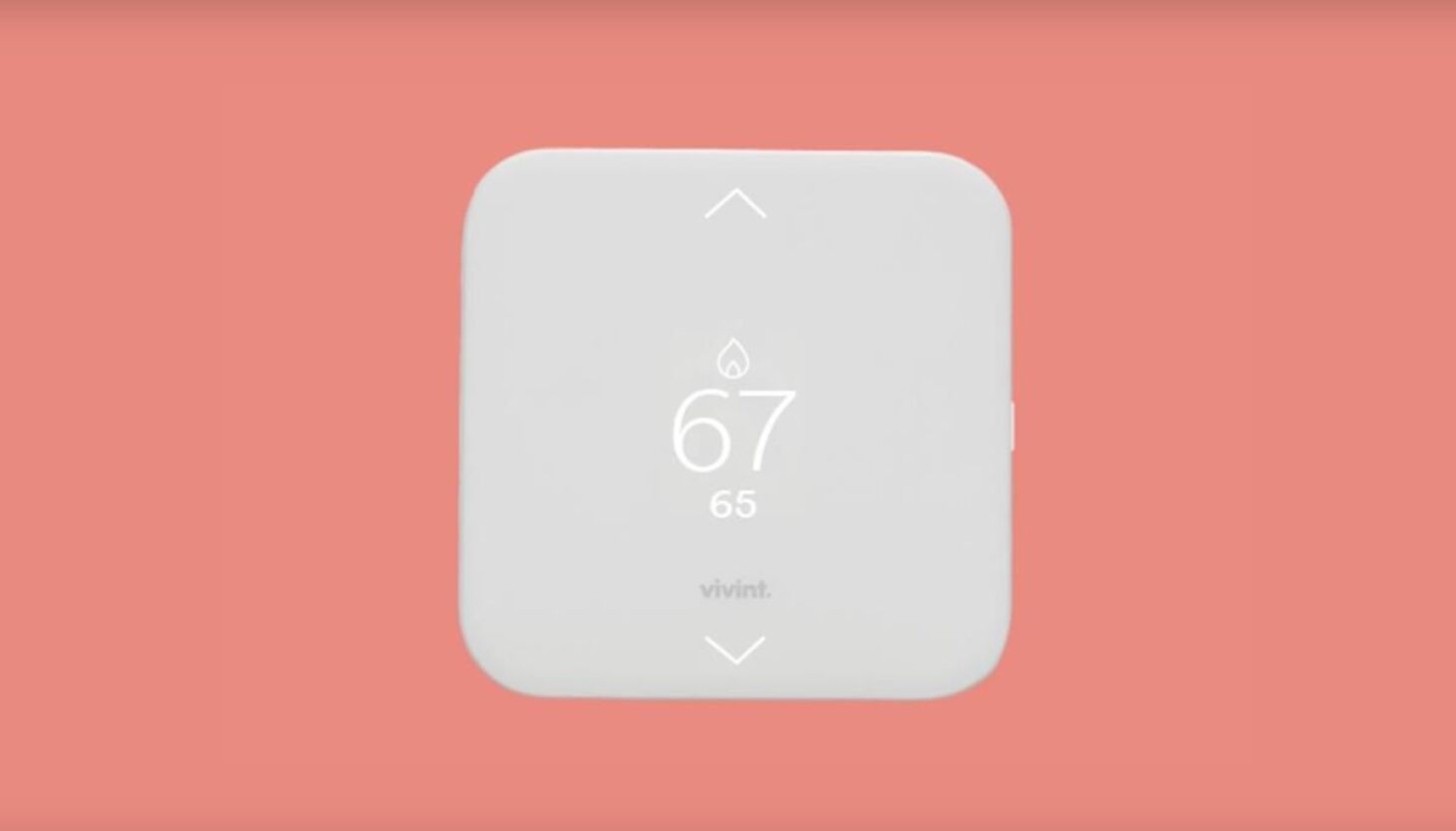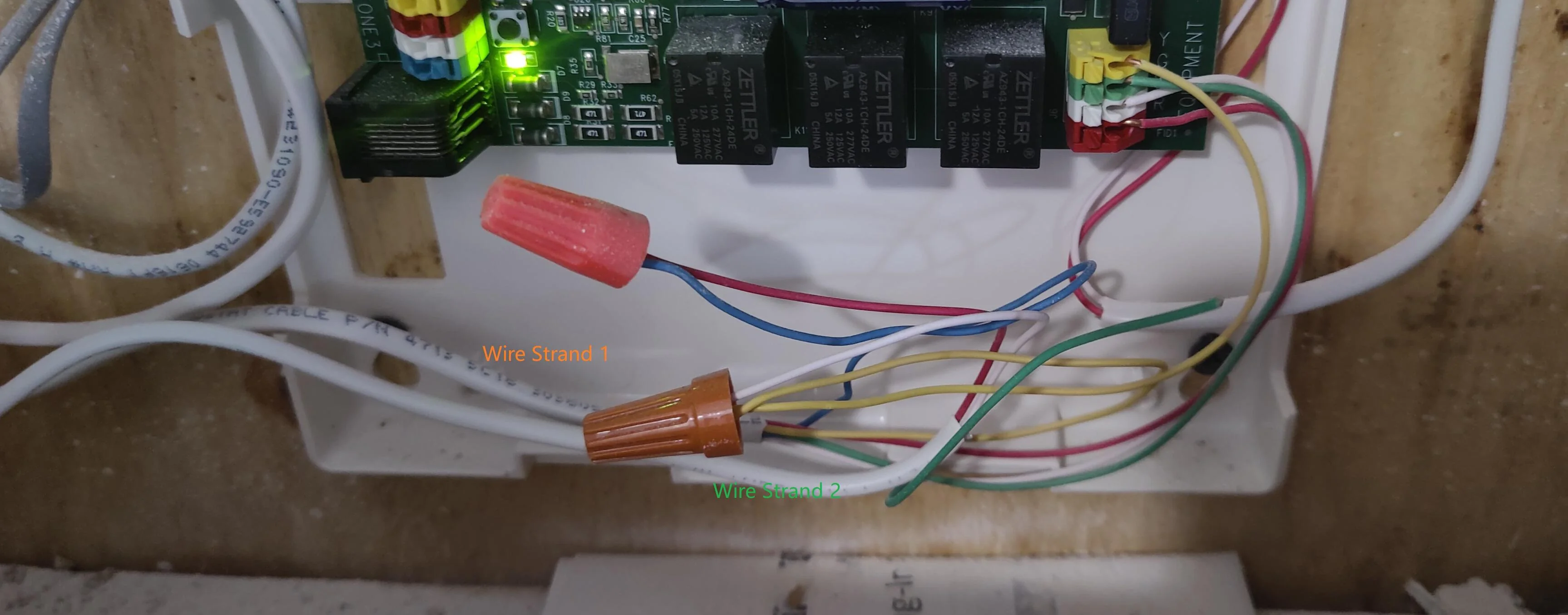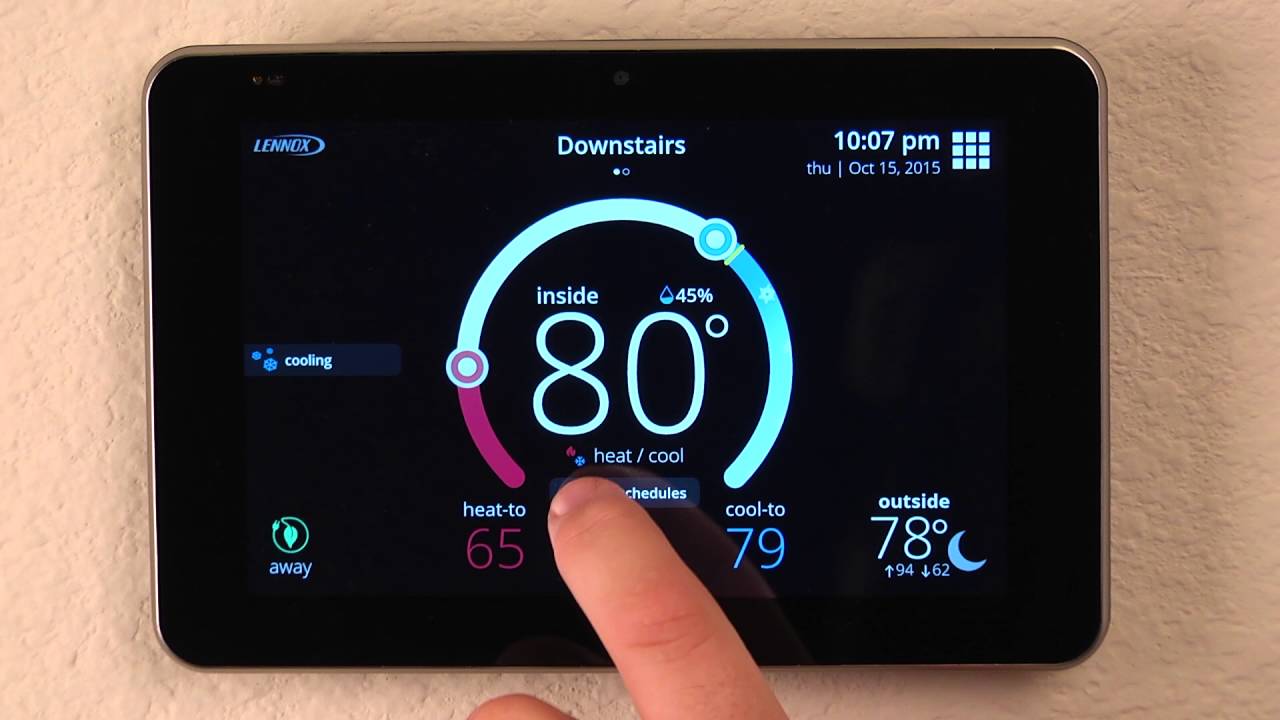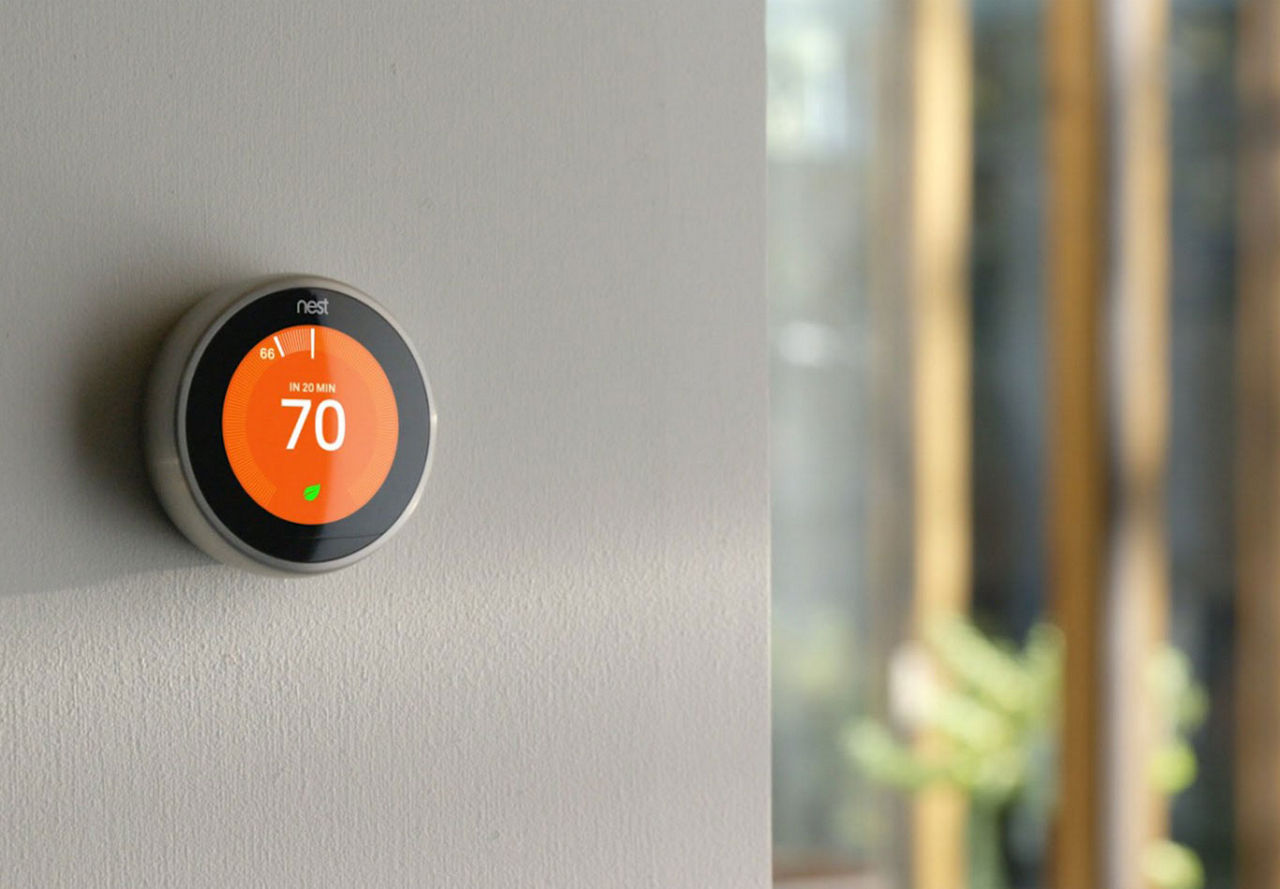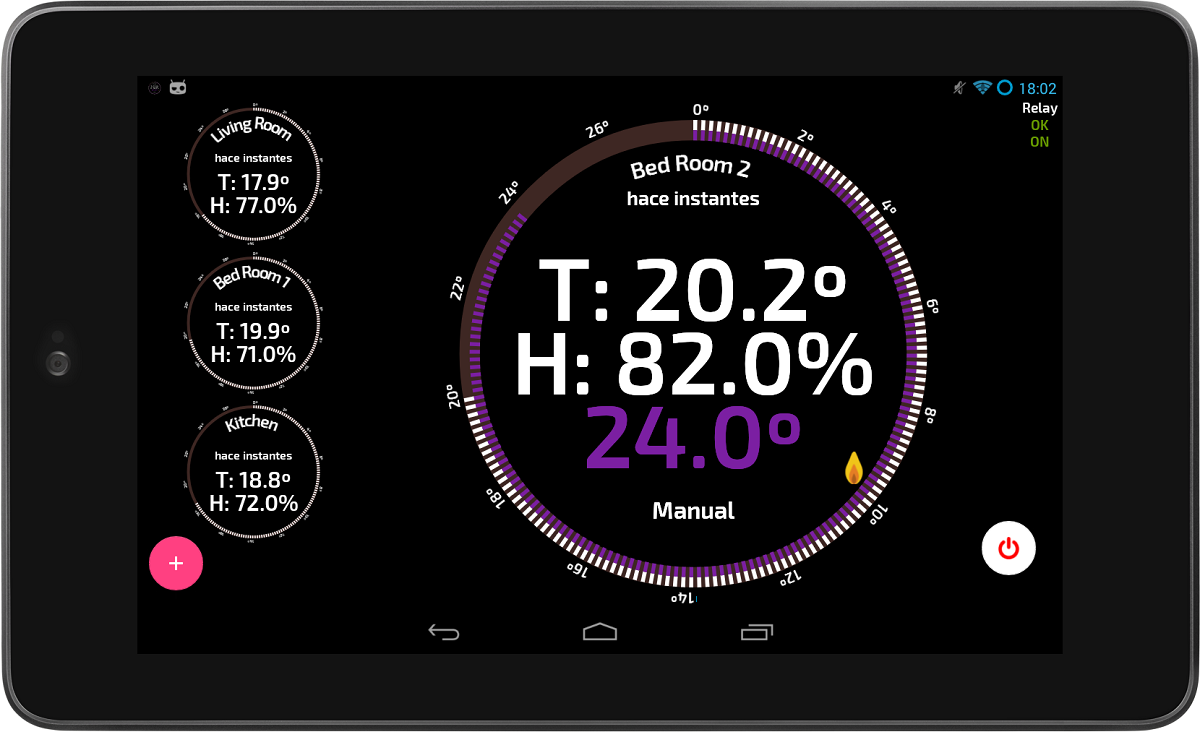Introduction
Welcome to the modern world of home automation, where smart thermostats have revolutionized the way we control our HVAC systems. Gone are the days of manual temperature adjustments and wasted energy. With a smart thermostat, you can effortlessly manage your home’s climate from anywhere using your mobile device or computer.
But before you jump on the bandwagon and invest in a smart thermostat, it’s important to understand what you need to make it work effectively. In this article, we will explore the key requirements for running a smart thermostat in your home.
Smart thermostats come in a variety of models and brands, each offering unique features and functionalities. Before making a purchase, it’s essential to compare different options to find the one that best suits your needs. Look for compatibility with your HVAC system, ease of installation, energy-saving features, and customizable settings.
One crucial aspect to consider when setting up a smart thermostat is internet connectivity. Since these devices rely on cloud-based platforms and remote access, a stable and reliable internet connection is vital. Ensure that your home has a strong Wi-Fi signal in the area where the thermostat will be installed.
Compatible HVAC system is another critical requirement for running a smart thermostat. Different thermostats work with specific heating and cooling systems. Ensure that your HVAC system is compatible with the smart thermostat you choose. Common HVAC system compatibility includes gas, electric, heat pump, or multi-stage heating and cooling systems.
Power source is another consideration. Some smart thermostats are battery-powered, while others require a constant power supply. It’s important to know the power requirements of the thermostat you choose and ensure that your home’s wiring can accommodate it.
To control and monitor your smart thermostat remotely, you will need a mobile device or computer with internet access. Most smart thermostats offer dedicated mobile apps or web interfaces that allow you to adjust temperature settings, create schedules, and track energy usage.
A reliable Wi-Fi network is essential for connecting your smart thermostat to the internet and enabling remote access. Ensure that your Wi-Fi network is secure and has a strong signal in the location where the thermostat will be installed.
Finally, check if your smart thermostat is compatible with your existing smart home ecosystem. If you already have other smart devices, such as smart speakers, smart lights, or smart locks, make sure your smart thermostat can integrate with them seamlessly.
By considering these requirements, you can ensure that your smart thermostat functions optimally and enhances the comfort and energy-efficiency of your home. Keep in mind that every home is unique, and it’s important to choose a smart thermostat that aligns with your specific needs and preferences.
Comparing Smart Thermostats
When it comes to choosing a smart thermostat, there are several options available in the market. It’s important to compare different models and brands to find the one that suits your specific requirements. Here are some factors to consider when comparing smart thermostats:
Features: Smart thermostats come with a variety of features that can enhance your home’s energy efficiency and comfort. Some common features include programmable temperature settings, geofencing, learning algorithms, humidity control, and energy usage tracking. Assess your needs and prioritize the features that are most important to you.
Installation: Consider the ease of installation when comparing smart thermostats. Some models require professional installation, while others offer a do-it-yourself option. If you’re comfortable with DIY projects, opting for a self-installation model can save you time and money. However, if you’re unsure about the installation process, it’s best to seek professional help.
User Interface: The user interface of a smart thermostat should be intuitive and user-friendly. Look for models with a clear and responsive touchscreen display or easy-to-use mobile apps. A good user interface will make it effortless to adjust temperature settings, create schedules, and monitor energy usage.
Compatibility: Ensure that the smart thermostat you choose is compatible with your HVAC system. Different thermostats work with specific heating and cooling systems, such as gas, electric, heat pump, or multi-stage systems. Consult the specifications provided by the manufacturer to confirm compatibility with your existing HVAC system.
Energy Savings: One of the main benefits of a smart thermostat is its ability to save energy and reduce utility costs. Look for models that have energy-saving features like adaptive learning, occupancy detection, and smart algorithms that adjust temperature settings based on your lifestyle and usage patterns. Some thermostats even provide reports and recommendations to help you optimize energy consumption.
Smart Home Integration: If you already have a smart home ecosystem set up, consider whether the smart thermostat is compatible with your existing devices. Compatibility with popular smart home platforms like Amazon Alexa, Google Assistant, or Apple HomeKit can enable seamless integration and voice-controlled operation.
Budget: Smart thermostats come in different price ranges, so it’s important to consider your budget when comparing options. While higher-priced models may offer advanced features and better energy savings, it’s essential to find a balance between price and functionality that suits your needs.
By comparing these factors, you can make an informed decision and select a smart thermostat that meets your requirements. Remember, the perfect smart thermostat will not only enhance your home’s comfort and convenience but also contribute to energy efficiency and savings.
Internet Connectivity
Internet connectivity is a crucial requirement for running a smart thermostat effectively. Since these devices rely on cloud-based platforms and remote access, a stable and reliable internet connection is vital. Here are some key points to consider when it comes to internet connectivity for your smart thermostat:
Wi-Fi Signal Strength: Before installing a smart thermostat, ensure that your home has a strong Wi-Fi signal in the area where the thermostat will be placed. Weak Wi-Fi signals can lead to connectivity issues, slow response times, or even complete disconnection. Consider using Wi-Fi extenders or a mesh Wi-Fi system to strengthen the coverage throughout your home.
Security and Privacy: The connection between your smart thermostat and the internet should be secure to protect your privacy and prevent unauthorized access. Look for thermostats that use encryption protocols, such as WPA2 or WPA3, to ensure a secure connection. It’s also essential to keep your Wi-Fi network password protected and regularly update the firmware of your smart thermostat to stay protected against potential vulnerabilities.
Bandwidth Requirements: While a smart thermostat does not require substantial bandwidth, it still requires a stable internet connection to function properly. Consider your overall internet usage and the number of simultaneously connected devices in your home. If you have multiple devices streaming high-definition content or engaging in bandwidth-intensive activities, ensure that your internet plan can handle the additional load.
Network Reliability: A stable and reliable internet connection is crucial for the continuous operation of your smart thermostat. Interruptions or outages in your internet service can disrupt the remote access and control features of your smart thermostat. Consider investing in a reliable internet service provider and a router with good connectivity and performance.
Remote Access: One of the primary benefits of a smart thermostat is the ability to control and monitor it remotely. Ensure that your smart thermostat’s mobile app or web interface allows for easy remote access and control. Some thermostats even provide alerts and notifications to keep you informed about temperature changes or maintenance requirements when you’re away from home.
Smart Thermostat Compatibility: It’s important to note that not all smart thermostats require a Wi-Fi connection for basic functionality. Some models offer local control through physical buttons or a basic interface. However, without internet connectivity, you will miss out on the advanced features and remote access capabilities that make smart thermostats truly convenient and efficient.
By considering these factors, you can ensure that your smart thermostat stays connected to the internet reliably, allowing you to control and monitor your home’s temperature from anywhere with ease.
Compatible HVAC System
When installing a smart thermostat, it’s essential to consider the compatibility with your home’s heating, ventilation, and air conditioning (HVAC) system. Different thermostats are designed to work with specific types of HVAC systems, and ensuring compatibility will ensure optimal functionality. Here are some key factors to consider:
Heating and Cooling Systems: The first step in determining compatibility is to identify the type of heating and cooling system you have in your home. Common types include gas, electric, heat pump, or multi-stage systems. Review the specifications provided by the smart thermostat manufacturer to ensure compatibility with your specific HVAC system.
Voltage Compatibility: In addition to the type of system, you should also consider the voltage requirements of your HVAC system. Some thermostats are designed for low voltage systems, while others are compatible with line voltage systems. Line voltage systems typically have higher voltage requirements and are commonly found in electric baseboard heating systems. Ensure that the smart thermostat you choose is compatible with the voltage range of your HVAC system.
Number of Heating and Cooling Stages: HVAC systems can have single-stage, multi-stage, or variable speed heating and cooling components. It’s important to choose a smart thermostat that can accommodate the number of stages in your system. For example, if you have a dual-stage heating system, you need a thermostat that can control both stages efficiently.
Control Wiring Compatibility: Check the wiring compatibility between your HVAC system and the smart thermostat. Most thermostats require a common wire (C wire) for power supply and uninterrupted operation. If your current thermostat doesn’t have a C wire, consider using a smart thermostat that offers alternative power options, such as battery-powered models or thermostats that can draw power from the existing wiring without a dedicated C wire.
Heat Pump Compatibility: If you have a heat pump system, ensure that the smart thermostat is specifically designed and compatible with heat pump systems. Heat pumps have unique features and wiring requirements, and not all smart thermostats support them. Be sure to verify the manufacturer’s specifications before making a purchase.
Zoned HVAC Systems: If your home has a zoned HVAC system with multiple thermostats controlling different zones, finding a smart thermostat that supports zoning is essential. Zoned systems often require additional features, such as individual temperature control for each zone and compatibility with zone controllers. Check the smart thermostat’s compatibility with your zoning setup.
By considering these factors, you can select a smart thermostat that is compatible with your HVAC system, ensuring proper functionality and seamless integration. It’s crucial to review the manufacturer’s specifications and consult HVAC professionals if you have any doubts or questions about compatibility.
Power Source
When setting up a smart thermostat, it’s important to consider the power source required for its operation. While some smart thermostats are battery-powered, others require a constant power supply. Understanding the power requirements will ensure that your smart thermostat functions reliably. Here are the key considerations regarding the power source:
Battery-Powered: Some smart thermostats are designed to run on batteries. This option offers flexibility in terms of installation since it doesn’t require a direct power connection. Battery-powered thermostats are often easy to install and can be placed in any suitable location without the need for additional wiring. However, it’s important to keep in mind that battery-powered thermostats will require periodic battery changes to ensure continuous operation.
Constant Power Supply: Many smart thermostats require a constant power supply to operate efficiently. These thermostats are usually connected to the existing wiring of your HVAC system and draw power directly. This allows for continuous operation and eliminates the need for battery replacements. However, it does require a compatible wiring setup and may require professional installation if you are unfamiliar with electrical work.
C-Wire Requirement: The C-wire, or common wire, is an additional wire in the thermostat’s wiring setup that provides a constant power supply. Some smart thermostats require a C-wire connection for their operation. It’s important to check your current thermostat’s wiring configuration to determine if you have a C-wire. If your existing setup doesn’t include a C-wire, there are alternative options available, such as using a power extender kit or choosing a smart thermostat model that doesn’t rely on a C-wire.
Power Extender Kit: If your current wiring setup doesn’t include a C-wire but is otherwise compatible with a smart thermostat, you can use a power extender kit. This kit allows you to add a C-wire-like function using the existing wires in your setup. It’s an effective solution for providing a constant power supply to your smart thermostat without the need for additional wiring.
Compatibility Checks: Before purchasing a smart thermostat, it’s essential to verify its power requirements and compatibility with your HVAC system’s wiring setup. Review the specifications provided by the manufacturer, and, if unsure, consult a professional HVAC technician or an electrician to assess your home’s wiring configuration and determine compatibility.
By considering the power source requirements of your smart thermostat, you can ensure its reliable operation and avoid any potential issues. Whether you opt for a battery-powered model or one that requires a constant power supply, understanding the power source requirements will contribute to the seamless functionality of your smart thermostat.
Mobile Device or Computer
To fully harness the convenience and control offered by a smart thermostat, you will need a mobile device or computer to access and interact with its features. Whether it’s adjusting temperature settings on the go or monitoring energy usage remotely, having a compatible device is essential. Here are some key considerations regarding the use of a mobile device or computer with your smart thermostat:
Compatibility: Before purchasing a smart thermostat, ensure that it is compatible with your preferred mobile device or computer operating system. Most smart thermostats offer dedicated mobile apps that can be downloaded from the App Store or Google Play. They may also provide web-based interfaces that can be accessed through a computer’s web browser. Check the system requirements and supported platforms to ensure a smooth user experience.
Mobile App Features: The mobile app associated with your smart thermostat should provide intuitive and user-friendly controls. Look for apps that offer features such as temperature adjustment, scheduling, energy usage monitoring, and alerts and notifications. Some advanced mobile apps may also provide geofencing capabilities, allowing the thermostat to adjust temperature settings based on your location to maximize energy efficiency.
Remote Access: One of the main advantages of a smart thermostat is the ability to control and monitor it from anywhere. Ensure that the mobile app or web interface offers secure remote access. This allows you to adjust temperature settings, create schedules, and view real-time data, even when you’re not at home. Remote access is especially useful for adjusting settings while you’re away, ensuring a comfortable home environment upon your return.
Connectivity: To access your smart thermostat remotely, you will need an internet connection on your mobile device or computer. Ensure that you have a stable and reliable internet connection to ensure seamless communication between your device and the smart thermostat. A strong Wi-Fi or cellular signal is essential for uninterrupted access and control.
Compatibility with Multiple Devices: Consider whether the smart thermostat’s mobile app supports multiple devices. This allows multiple users in your household to control and monitor the thermostat concurrently. Look for apps that offer multi-user support and the ability to assign different access levels to each user.
Integration with Voice Assistants: If you have voice assistants in your home, such as Amazon Alexa or Google Assistant, check if the smart thermostat is compatible with them. Integration with voice assistants allows for hands-free voice control, making it even more convenient to adjust temperature settings or ask for statistics. This is a valuable feature if you have your hands full or prefer a voice-activated approach.
By considering these factors, you can ensure that you have a compatible mobile device or computer to access and control your smart thermostat effortlessly. The ability to adjust settings, create schedules, and monitor energy usage remotely adds an extra level of convenience, making your home more comfortable and energy-efficient.
Wi-Fi Network
A reliable Wi-Fi network is a fundamental requirement for running a smart thermostat effectively. Since smart thermostats connect to the internet and rely on cloud-based platforms, it’s crucial to ensure a stable and strong Wi-Fi connection. Here are some key considerations regarding your Wi-Fi network:
Signal Strength: The signal strength of your Wi-Fi network plays a vital role in the connectivity and performance of your smart thermostat. Ensure that the area where the thermostat will be installed has a strong and stable Wi-Fi signal. Weak signals may result in intermittent connectivity issues, slower response times, or even disconnections. If needed, consider using Wi-Fi extenders or a mesh Wi-Fi system to strengthen the coverage throughout your home.
Network Security: To protect your privacy and prevent unauthorized access, it’s important to ensure the security of your Wi-Fi network. Set up a strong and unique password for your network to guard against potential hacking attempts. Additionally, enabling the latest security protocols, such as WPA2 or WPA3, adds an extra layer of protection for your smart thermostat and other connected devices.
Wi-Fi Band and Channel Interference: Wi-Fi networks operate on different frequency bands, such as 2.4 GHz and 5 GHz. Ensure that your smart thermostat and Wi-Fi network are compatible in terms of band support. Additionally, be aware of potential channel interference from other devices, such as cordless phones or neighboring Wi-Fi networks. Selecting the least congested Wi-Fi channel can help minimize interference and improve the performance of your smart thermostat.
Network Reliability: A stable and reliable internet connection is crucial for the continuous operation of your smart thermostat. Connectivity issues or frequent outages can disrupt the remote access and control features of your thermostat. Consider investing in a reliable internet service provider and a router with good connectivity and performance to ensure uninterrupted access to your smart thermostat.
Bandwidth Usage: While a smart thermostat doesn’t require significant bandwidth, it still relies on a stable connection for remote access and control. Assess your overall internet usage and the number of connected devices in your home. If you have multiple devices streaming high-definition content or engaging in bandwidth-intensive activities, ensure that your internet plan can handle the additional load without compromising the performance of your smart thermostat.
Network Name and Password: When setting up your smart thermostat, you will need to connect it to your Wi-Fi network. Ensure that you have your Wi-Fi network name (SSID) and password readily available. Double-check the entered information to avoid any typographical errors that may prevent your smart thermostat from connecting to your network successfully.
By considering these factors and ensuring a reliable and secure Wi-Fi network, you can maximize the connectivity and functionality of your smart thermostat. A strong Wi-Fi connection will enable seamless remote access and control, allowing you to enjoy the full benefits and convenience of your smart home heating and cooling system.
Smart Home Compatibility
Smart home compatibility is an important consideration when setting up a smart thermostat. Integration with your existing smart home ecosystem allows for a seamless and streamlined control experience. Here are some key points to consider regarding smart home compatibility:
Smart Home Platforms: Ensure that the smart thermostat you choose is compatible with popular smart home platforms such as Amazon Alexa, Google Assistant, or Apple HomeKit. Compatibility with these platforms allows you to control your thermostat using voice commands or through the associated smart home app. It enables you to create custom scenes or routines, such as adjusting the temperature when you say “Goodnight” to your voice assistant.
App Integration: Check if the smart thermostat’s mobile app integrates with other smart devices in your home. Look for options to control your thermostat alongside other connected devices such as smart lights, smart locks, or smart switches. This integration allows for a centralized control experience, where you can adjust multiple aspects of your smart home with a single app or voice command.
Smart Home Hubs: Some smart thermostats require a smart home hub to connect and communicate with other devices. These hubs act as a central control point for all your smart devices, providing enhanced compatibility and interconnectivity. If you already have a smart home hub, ensure that the smart thermostat is compatible with it to avoid the need for additional hubs or devices.
Automation and Scenes: Smart home compatibility enables advanced automation capabilities. Look for smart thermostat features that allow you to create scenes or rules based on specific triggers or events. For example, you can set the thermostat to adjust temperature settings when you leave home or have it sync with other smart devices to create custom routines for different times of the day.
Third-Party Integrations: Some smart thermostats offer integration with a wide range of third-party smart home devices beyond the popular platforms. This flexibility allows you to connect and control your thermostat alongside other compatible devices from various manufacturers. Consider any specific devices you already have or plan to acquire for your smart home and ensure compatibility with the chosen smart thermostat.
Compatibility Checks: Prior to purchase, confirm the compatibility of the smart thermostat with your preferred smart home platform, hub, or existing smart devices. Review the manufacturer’s specifications or consult their official website and documentation for the latest compatibility information. If in doubt, reach out to customer support for further clarification.
By ensuring smart home compatibility, you can integrate your smart thermostat seamlessly into your existing smart home ecosystem. This allows for centralized control, advanced automation, and a truly connected experience, enhancing the comfort, convenience, and energy efficiency of your home.
Additional Considerations
When setting up a smart thermostat, there are a few additional factors to consider to ensure optimal performance and functionality. These considerations will further enhance the overall experience and convenience of using a smart thermostat in your home. Here are some key points to keep in mind:
Display and Interface: Consider the display and interface of the smart thermostat. Look for a clear and easy-to-read display with intuitive controls. Touchscreen interfaces or displays with backlighting can enhance usability, especially in low-light conditions. A well-designed interface makes it effortless to adjust temperature settings, view schedules, and access other features of the thermostat.
Energy Efficiency: Energy efficiency is a crucial aspect of smart thermostats. Look for models that have energy-saving features such as adaptive learning, geofencing, or occupancy detection. These features allow the thermostat to adjust temperature settings based on your preferences, occupancy patterns, and energy-saving goals, helping you conserve energy and reduce utility bills.
Data Privacy: With the increased connectivity of smart devices, it’s important to consider data privacy. Ensure that the smart thermostat you choose prioritizes data security and follows industry-standard protocols. Review the manufacturer’s privacy policy to understand how they handle and protect your personal data. If privacy is a significant concern, consider opting for models that emphasize strong encryption and provide transparency regarding data usage.
Manufacturer Support and Updates: Opt for a smart thermostat from a reputable manufacturer known for providing regular software updates and customer support. Regular updates ensure that your thermostat stays up-to-date with the latest features and security enhancements. Reliable customer support can assist you with any technical issues or questions that may arise during installation or operation.
Compatibility with HVAC Accessories: Consider if you have any additional HVAC accessories, such as a whole-house humidifier or dehumidifier, that you would like to integrate with your smart thermostat. Some smart thermostats support accessory control, allowing you to adjust and monitor these devices alongside your thermostat. Check the compatibility of the smart thermostat with the specific accessories you have or plan to install.
User-Friendly Installation: Look for smart thermostats that offer user-friendly installation processes. Some models provide step-by-step instructions or interactive guides to help you through the installation process. If you’re uncomfortable with DIY installations, consider professional installation services to ensure proper setup and functioning of the smart thermostat.
Warranty and Service: Check the warranty provided by the manufacturer. A longer warranty period shows confidence in the product’s quality and reliability. Additionally, consider any extended service or maintenance plans offered, as they can provide extra peace of mind and support if any issues arise in the future.
Considering these additional factors will help you make an informed decision when choosing and setting up your smart thermostat. It ensures that you select a thermostat that meets your specific needs, provides a user-friendly experience, and helps you create a comfortable, energy-efficient home environment.
Conclusion
Setting up a smart thermostat in your home can bring numerous benefits, including enhanced comfort, energy savings, and convenient control. However, it’s essential to understand the requirements and considerations associated with running a smart thermostat effectively. By considering factors such as internet connectivity, compatible HVAC systems, power sources, mobile device or computer compatibility, Wi-Fi networks, smart home integration, and additional considerations, you can ensure a seamless and optimal experience with your smart thermostat.
Comparing different smart thermostat models and brands allows you to select the one that best suits your needs, offering the features and functionality that align with your preferences. Ensure that your internet connectivity is reliable and secure to support the online capabilities of your smart thermostat. Compatibility with your HVAC system guarantees seamless integration and allows for proper control of your heating and cooling systems.
Power sources, such as battery or constant power supply, play a role in the operational reliability of your smart thermostat. Having a compatible mobile device or computer enables you to access and control your smart thermostat remotely, maximizing convenience and accessibility. A stable and strong Wi-Fi network ensures continuous communication with your smart thermostat and seamless remote access.
Smart home compatibility opens up opportunities for centralized control, automation, and integration with other smart devices in your home. Considering additional factors like display and interface, energy efficiency, data privacy, manufacturer support, HVAC accessory compatibility, and user-friendly installation will contribute to a smooth and satisfying experience with your smart thermostat.
As you embark on the journey of running a smart thermostat in your home, it’s important to carefully consider these requirements and considerations. By doing so, you can optimize the capabilities of your smart thermostat, enhance your comfort, and achieve energy savings. Take the time to research and select a smart thermostat that aligns with your specific needs and preferences, ensuring a seamless integration and a more efficient home climate control system.







